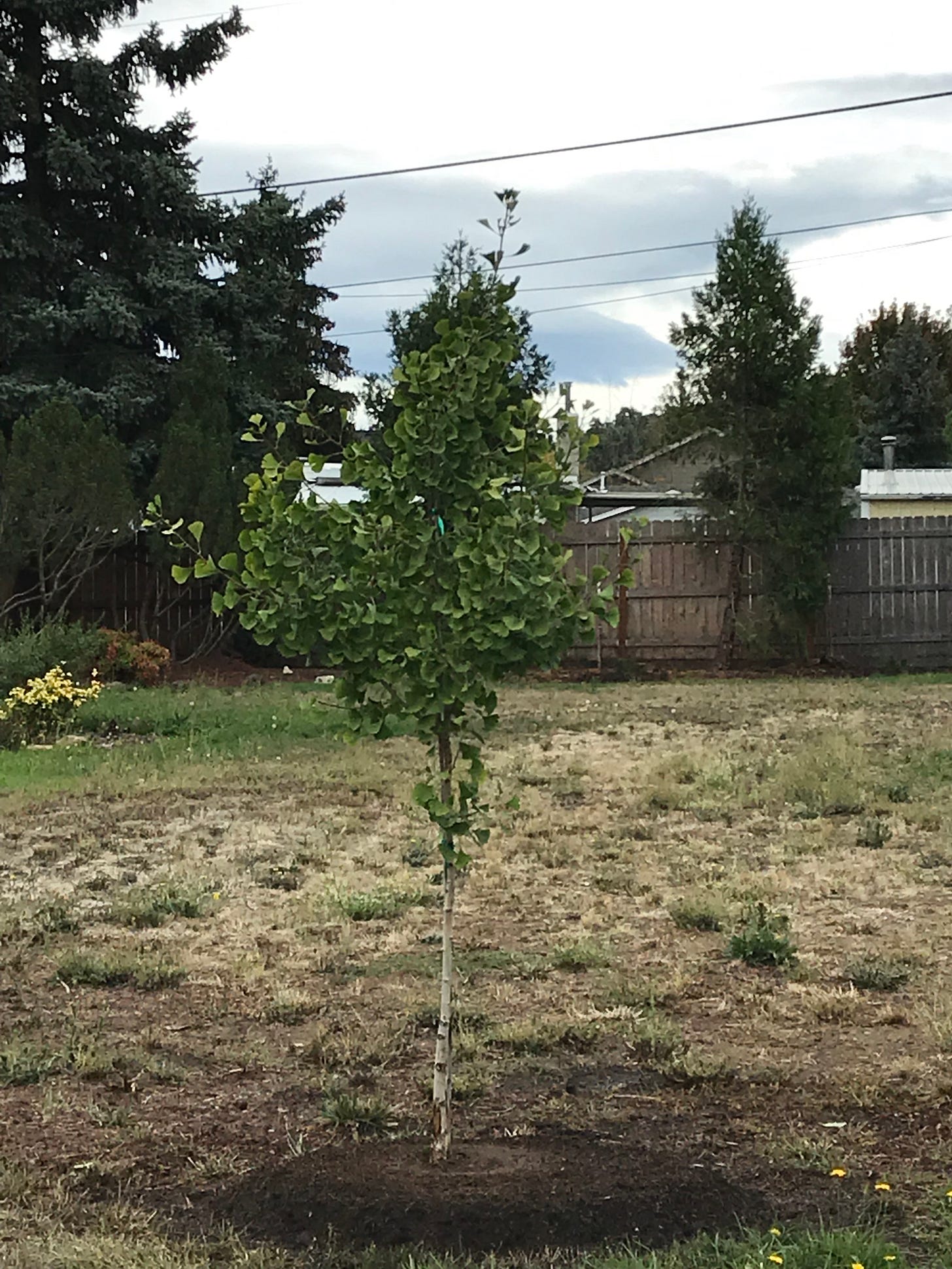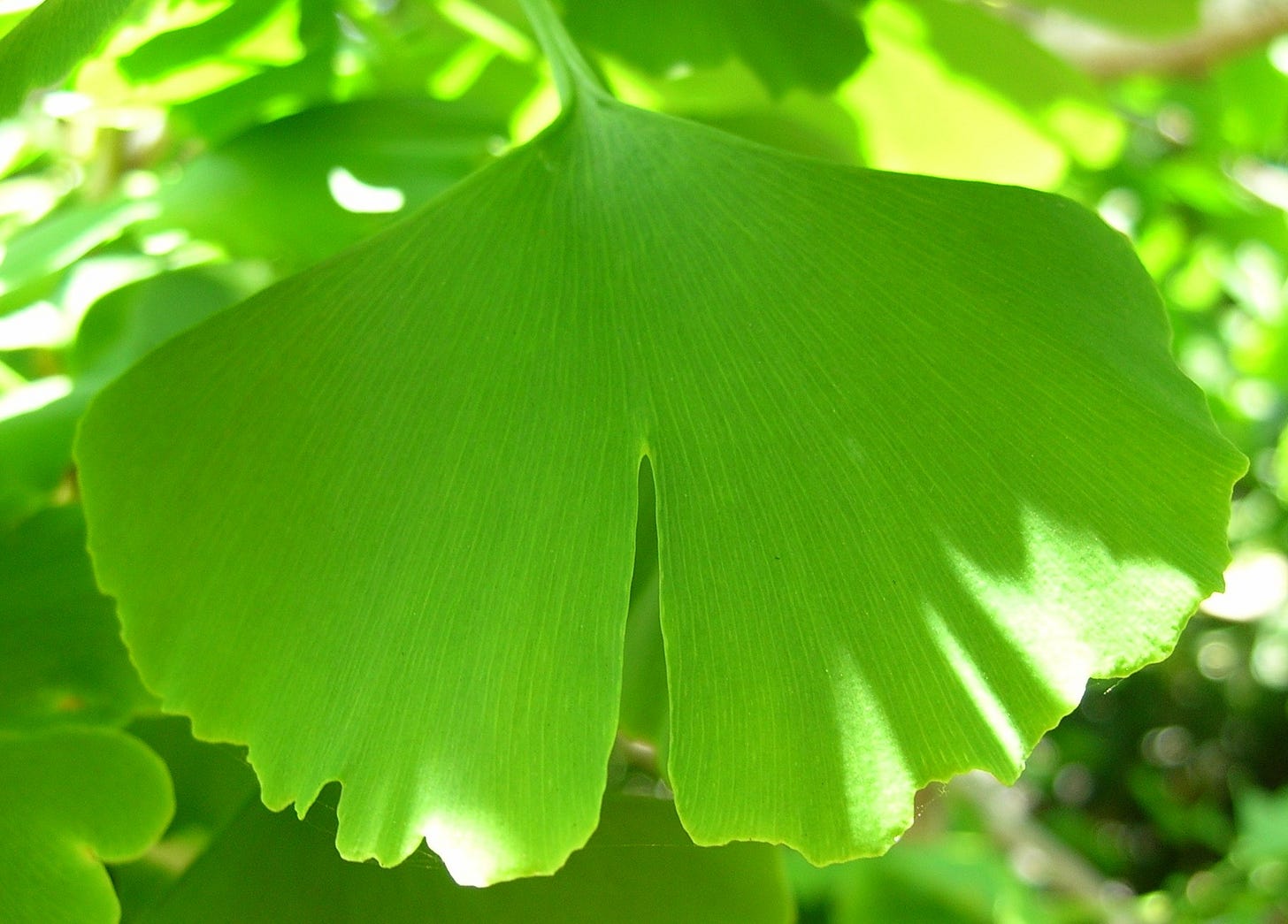Ginkgo - Oldest Living Tree on Earth
You heard it right! Ginkgo Biloba is the oldest living tree on earth. It has survived from the Triassic age 200 million years ago. “It is what Charles Darwin called a "living fossil", meaning that it is a plant that evolved into its present state early, and persists today much as it was eons ago." (Halpern, Georges; Ginkgo: A Practical Guide, pg. 16) This tree has not been highly grafted, tampered with or hybridized by man.
"Modern science has proved that the ginkgo tree contains a disinfectant called 2-hexenal, which kills microbes. In addition, the acid on the leaves is poisonous to insects, to the Escherichia coli {E coli} bacteria that has sickened and even killed people in the United States in recent years, and to the mosaic viruses that affect tobacco and beans. The Japanese ancients knew what they were doing when they planted ginkgo around bean plants to protect them." (Halpern, Georges; Ginkgo: A Practical Guide, pg. 22)
This tree also has significant meaning in Japan, because ginkgo seeds in the earth survived the atomic bomb drop on Hiroshima, and sprouted up out of that radiation poisoned soil. Ginkgo was also planted ornamentally on the dirty streets of post-Industrial Revolution cities. This was done because of its power and strength against pollution and pests. We are in the midst of another revolution going into the 21st century that is calling for innovative and environmental stewardship that remove radiation, toxins, and pests from our environment. That makes this my number one recommended tree for your garden and land.
Ginkgo is an excellent shade tree and can grow up to 120 feet tall and 40 feet wide. It has a beautiful vein pattern that runs from the petiole edge - stem that holds the leaf - in parallel lines to the lobed end. The leaves are bright green all summer, and then turn an awesome bright yellow in the fall!
Ginkgo is a deciduous (leaf-losing) conifer. Ginkgoes are also dioecious, meaning that they have separate male and female trees. Males are generally more desirable because they do not produce the messy, fleshy, ill-smelling, seed that fall and split in autumn.
The ginkgo tree prefers deep, moist, well-drained, sandy soils in the full sun, yet adapts well to stressful situations. Ginkgo is very urban tolerant where there is plenty of pollution. This is interesting to note because when ginkgo is used internally in the body, it promotes high levels of tolerance and adaptation to stressful situations. This family of trees has virtually no disease or pest problems, and has a mid range or medium growth rate.
Ginkgo also has beautiful, bold texture that accents its surrounding foliage. Making it used as a focal point in gardens, parks, and backyards.
Things to note when choosing and caring for your ginkgo tree:
Plant male trees grown from cuttings or grafted from male trees and avoid female trees due to reasons previously noted.
Be sure that nursery plants are not root bound if you want to buy from your local nursery. Here are varieties to consider:
Autumn Gold - Fairmount - Princeton Sentry - Saratoga
Water young trees regularly until they reach at least 20 feet tall. Then cut back to occasional waterings.
On young trees, prune off any awkward branches or vertical shoots growing parallel to central stem.
Older trees require minimal pruning. Remove dead, broken, or weak branches.
This post was created from my Master's Thesis on Ginkgo for Dr. Christopher's School of Natural Healing.
Straight Up & Free with James D is a reader supported publication.
If you found this valuable and educational, and appreciate the craftsmanship and care I bring in providing this content, please consider upgrading your subscription to support my work. You can also give a gift subscription, or make a one time donation.
Thank you!



